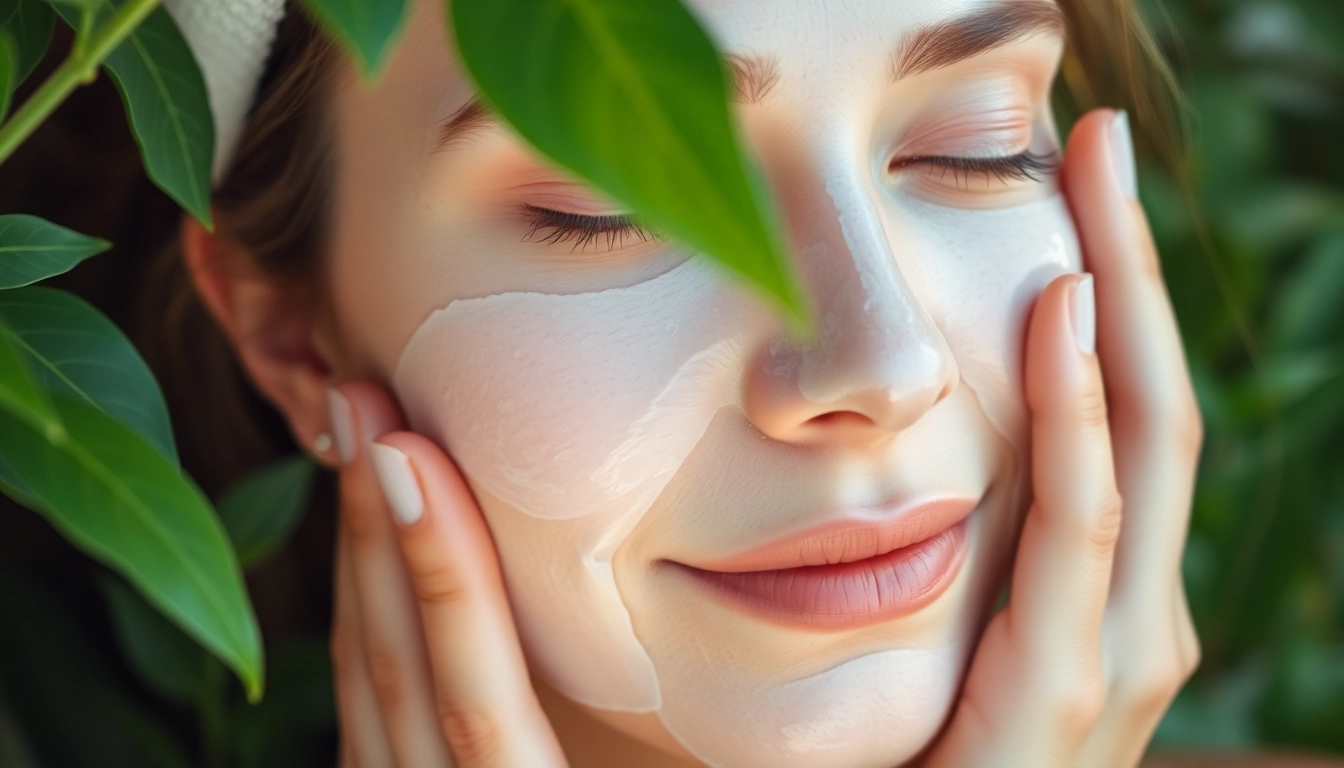
Understanding Sheet Masks: An Overview
In recent years, sheet masks have emerged as a staple in skincare regimens worldwide. These fabric masks infused with serums, essences, and other nourishing ingredients have captured the attention of beauty enthusiasts, offering a quick and effective way to hydrate and rejuvenate the skin. But what exactly is a sheet mask? This article dives deep into the origins, types, and usage of sheet masks, as well as how they can cater to various skin concerns.
What is a Sheet Mask?
A sheet mask is a thin piece of fabric—typically made from cotton, cellulose, or another material—that has been soaked in a concentrated serum. Designed to fit the contours of the face, these masks aim to deliver key ingredients into the skin effectively. Unlike traditional face masks that may require rinsing, sheet masks are simply placed on the face for a set period, allowing for maximum absorption of the active ingredients.
Key Ingredients in Sheet Masks
Sheet masks can contain a wide variety of ingredients, each targeting different skin concerns:
- Hyaluronic Acid: Known for its incredible hydrating properties, hyaluronic acid helps to plump and moisturize dry skin.
- Niacinamide: This ingredient brightens the skin and helps in reducing the appearance of pores.
- Collagen: Often included for its anti-aging benefits, collagen helps improve skin elasticity.
- Green Tea Extract: A powerful antioxidant, it helps combat free radicals and soothe inflammation.
- Peptides: These can enhance skin texture and boost collagen production, promoting a youthful appearance.
The History and Evolution of Sheet Masks
The use of sheet masks dates back to ancient Asian beauty rituals, where women would use rice paper soaked in herbal essences to nourish their skin. However, the modern sheet mask as we know it gained traction in South Korea in the early 2000s. The Korean beauty industry innovated this concept, incorporating advanced formulations and varied materials. As global interest in K-beauty soared, sheet masks became a widespread trend, with countless brands developing their own unique offerings.
Types of Sheet Masks for Different Skin Concerns
With the diverse range of sheet masks available, there is a solution for nearly every skin concern. Understanding the different types of sheet masks can help you choose the right one for your specific needs.
Hydrating Sheet Masks: Quenching Dry Skin
Hydrating sheet masks are designed to infuse moisture back into the skin. Ideal for those with dry or dehydrated skin, they often contain ingredients like hyaluronic acid, glycerin, and aloe vera. These masks can be incredibly beneficial, especially in harsh weather conditions or after long flights, as they help restore the skin’s moisture barrier and leave it feeling soft and supple.
Brightening Sheet Masks: Enhancing Skin Tone
Brightening sheet masks typically feature ingredients that target uneven skin tone and dark spots. Common ingredients include vitamin C, licorice extract, and niacinamide. By promoting a more radiant complexion, these masks can help individuals achieve a brighter, more uniform skin appearance. Regular use can reduce pigmentation and enhance overall glow.
Acne-Fighting Sheet Masks: Targeting Skin Flare-Ups
Designed specifically for acne-prone skin, these sheet masks contain salicylic acid, tea tree oil, and other anti-inflammatory ingredients. They work by controlling excess oil production and reducing inflammation, making them an excellent choice for those experiencing breakouts. These masks can provide targeted relief while helping to prevent future flare-ups when used consistently.
How to Use Sheet Masks Effectively
To maximize the benefits of sheet masks, it’s essential to use them correctly. Here’s a detailed guide on how to incorporate sheet masks into your skincare routine.
Preparation: Cleansing and Toning
Before applying a sheet mask, it’s crucial to start with a clean canvas. Begin by thoroughly cleansing your face to remove makeup, dirt, and impurities. Following cleansing, apply a toner to help balance your skin’s pH and enhance absorption. A well-prepped face allows the ingredients in the sheet mask to penetrate deeper, boosting its effectiveness.
Application Techniques for Maximum Benefits
After preparing your skin, carefully unfold the sheet mask and align it with the contours of your face, starting from the forehead and working downwards. Gently press the mask onto the skin, ensuring that there are no air pockets. Allow it to sit for approximately 15 to 30 minutes, depending on the instructions provided. During this time, you may want to relax and take the opportunity for some self-care.
Post-Mask Care: What to Do Next
Once you remove the sheet mask, avoid rinsing your face. Instead, gently pat any remaining serum into your skin to enhance absorption. Follow up with a moisturizer to seal in the benefits and maintain hydration. This step is particularly important, as it can help lock in the nourishing ingredients and keep your skin hydrated for longer.
DIY Sheet Mask Recipes for Home Enthusiasts
For those who enjoy crafting their beauty treatments, creating homemade sheet masks can be both fun and rewarding. Using natural ingredients allows for a customizable approach to skincare.
Natural Ingredients for Customizable Masks
Many everyday ingredients can be used to create potent DIY sheet masks. Consider the following:
- Yogurt: Rich in lactic acid, it offers gentle exfoliation and hydration.
- Aloe Vera: Known for its soothing properties, it’s perfect for inflamed or sunburned skin.
- Honey: A natural humectant, honey helps retain moisture and has antibacterial properties.
- Green Tea: Packed with antioxidants, it can help reduce signs of aging and hydrate the skin.
- Cucumber: Ideal for cooling effect and treating puffiness.
Step-by-Step Guide to Creating Your Own Sheet Mask
To create a DIY sheet mask, follow these steps:
- Select your base—this could be a slice of cotton fabric, a paper towel, or even a non-woven fabric specifically made for masks.
- Mix your chosen ingredients in a bowl. Aim for a consistency that isn’t too runny to prevent dripping.
- Soak your fabric base in the mixture, ensuring it absorbs the serum evenly.
- Carefully place the mask over your clean face, ensuring it fits properly.
- Leave the mask on for 15-20 minutes, then remove and follow the post-mask care instructions.
Tips for Storing and Using Homemade Masks
If you made a larger batch, store any leftover serum in an airtight container in the fridge for up to a week. You can use this excess serum to enhance your everyday moisturizer or apply it directly to your skin as a treatment. Always conduct a patch test with new ingredients to avoid any adverse reactions. Homemade masks can vary in effectiveness; observe how they affect your skin and adjust your recipes accordingly.
Measuring the Impact of Sheet Masks on Your Skin
To assess the benefits of sheet masks, it’s crucial to implement systematic tracking of changes in your skin over time. Here are effective ways to measure the impact.
Before and After: Tracking Skin Improvements
Document your skin’s condition using pictures taken at intervals—before starting your sheet mask routine and after consistent use for a month or two. This will allow you to visualize improvements, whether it’s enhanced hydration, reduced breakouts, or improved brightness. Note any changes in texture, tone, and moisture levels to have a comprehensive view of how your skin reacts.
Customer Reviews and Feedback: Real Experiences
Understanding real-life experiences of others can offer crucial insight into how effective sheet masks are for various skin conditions. Online reviews often provide firsthand accounts of results, detailing specific concerns and the type of masks used. Such evaluations can help you choose the right product, as customer feedback often highlights what works well and any potential drawbacks.
Best Practices for Long-Term Skin Health
To maintain the benefits of sheet masks, incorporate them into a consistent skincare routine rather than relying on them sporadically. Combining sheet masks with a well-balanced diet, adequate hydration, and sun protection will further enhance skin health. As your skin evolves, be open to adapting your choice of sheet masks to meet your current needs.







